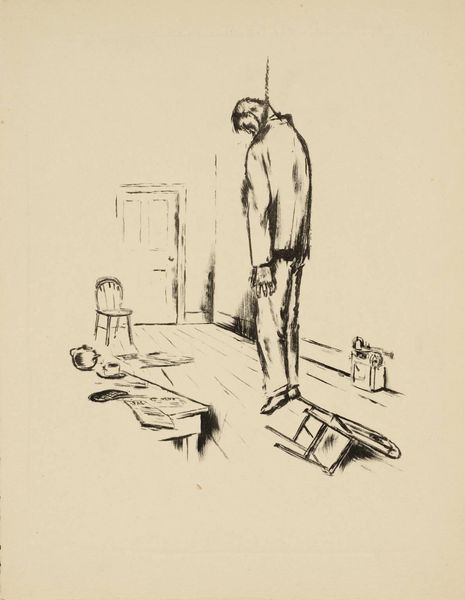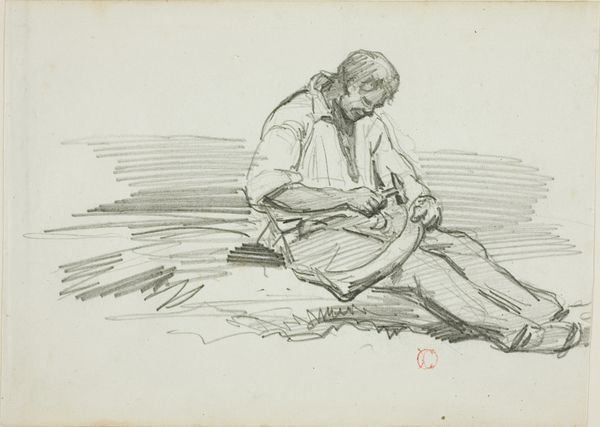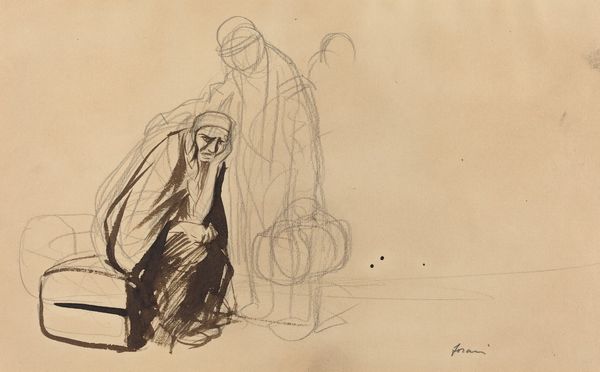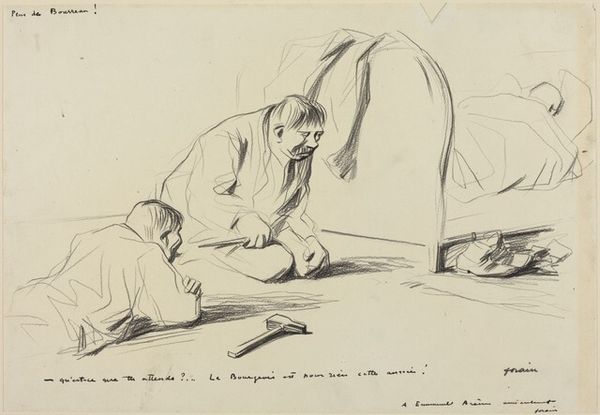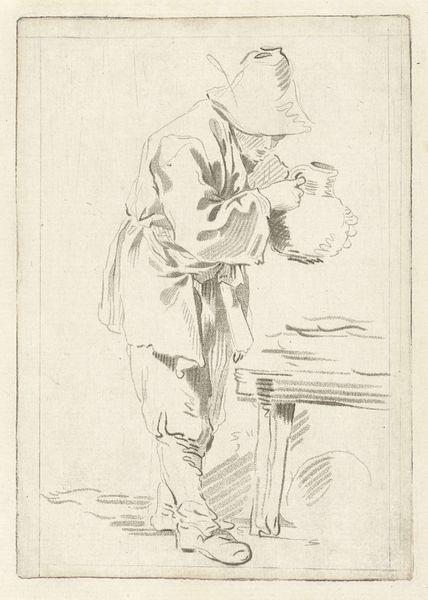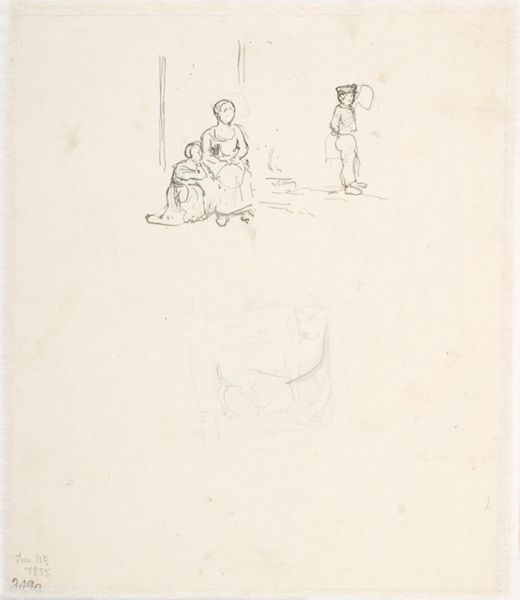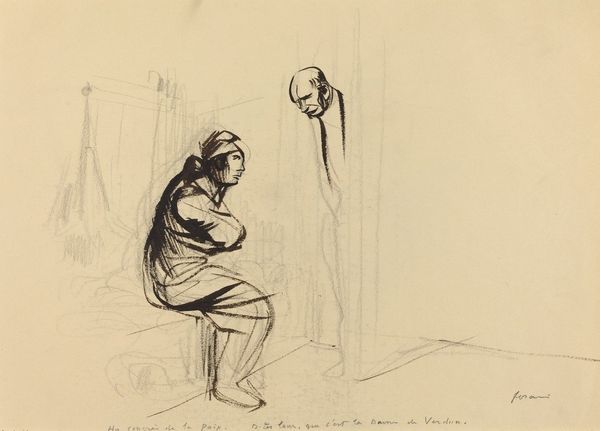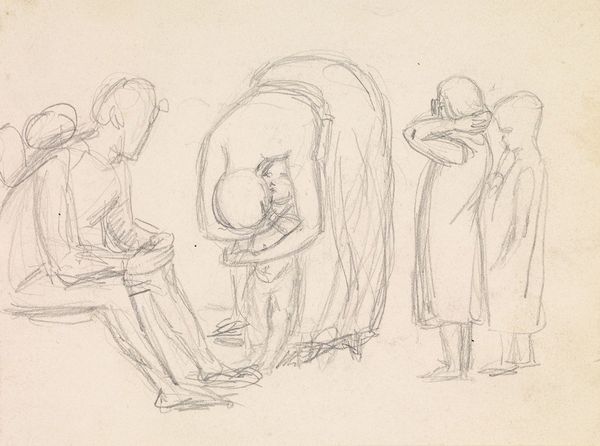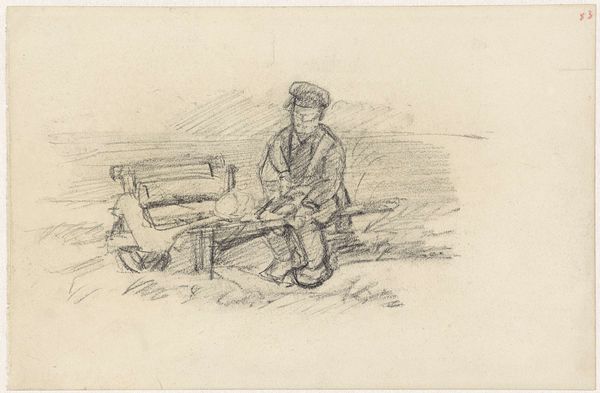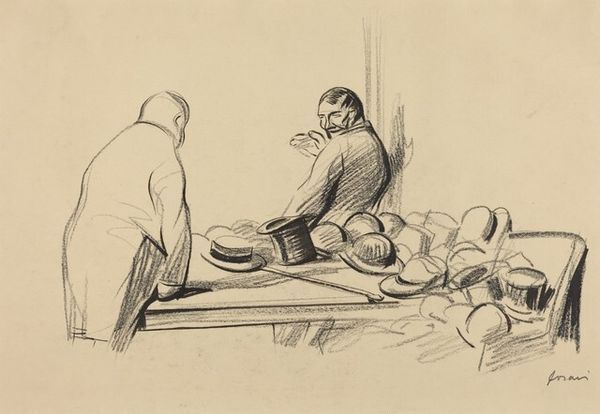
Copyright: Public Domain: Artvee
Editor: This drawing, "Le demobilise II" by Jean-Louis Forain, was created sometime between 1914 and 1919, using pencil. There's such a palpable sense of weariness here; the slumped figure of the man contrasted with the helmet on the chair really speaks to me about the aftermath of war. What jumps out at you? Curator: You know, it's interesting that you use the word 'weariness'— it absolutely nails it, doesn't it? I look at this and I think about the quiet devastation, the domestic echoes of a world turned upside down. The intimacy of the father-daughter embrace against the discarded uniform... It feels so incredibly vulnerable, a silent scream, if you will. Makes you wonder what horrors he’s seen, right? It is amazing to note how he is both present and absent, holding onto his child and remembering memories that would affect the new family dynamics forever. Do you see anything else in how Forain uses composition to convey these feelings? Editor: I hadn’t thought of it that way, but I see what you mean. The negative space surrounding them isolates the pair and amplifies the sense of them as the only two souls that matter in that particular moment in time. Curator: Precisely. It's almost cinematic, isn't it? He invites us into the intimacy of this moment. But, I see how it seems he deliberately refrains from offering any comforting sentiment. The somber tones create a bittersweet elegy about resilience during tragic circumstances. It definitely captures the melancholy beauty after the war, don't you think? Editor: It does now! I initially saw it as a straightforward image of post-war sorrow, but now I recognize layers of depth within those strokes. Curator: That’s the marvelous power of art. I leave this image with the hope that viewers will ponder what can they do for those directly affected by modern conflicts across the globe.
Comments
No comments
Be the first to comment and join the conversation on the ultimate creative platform.
